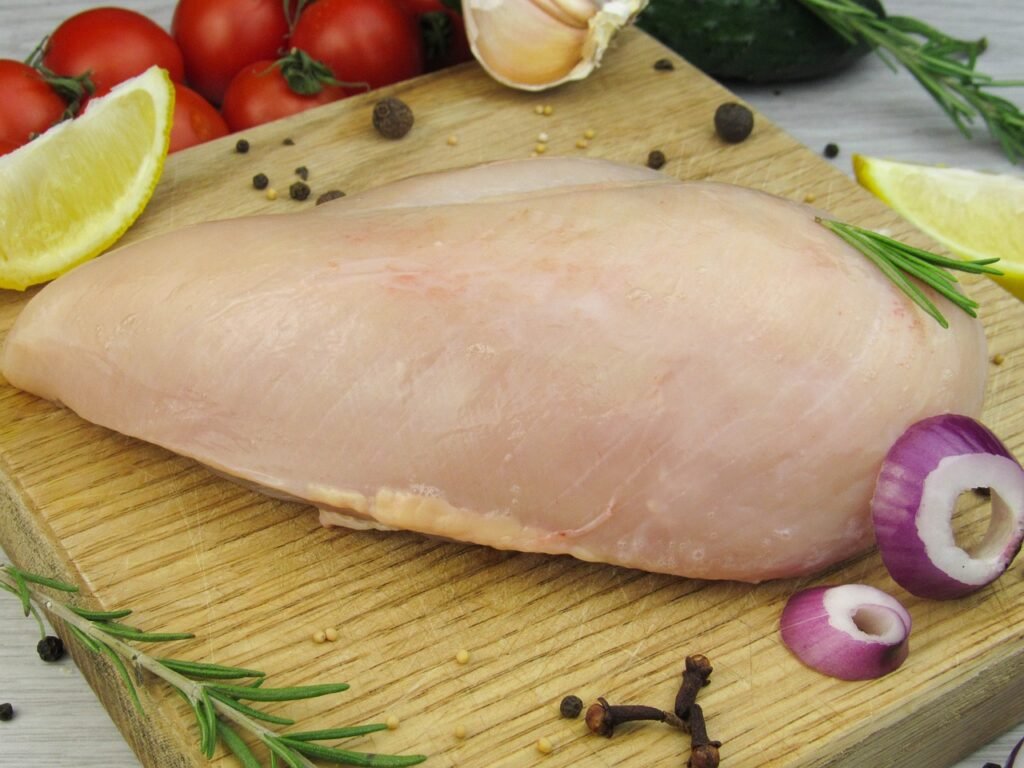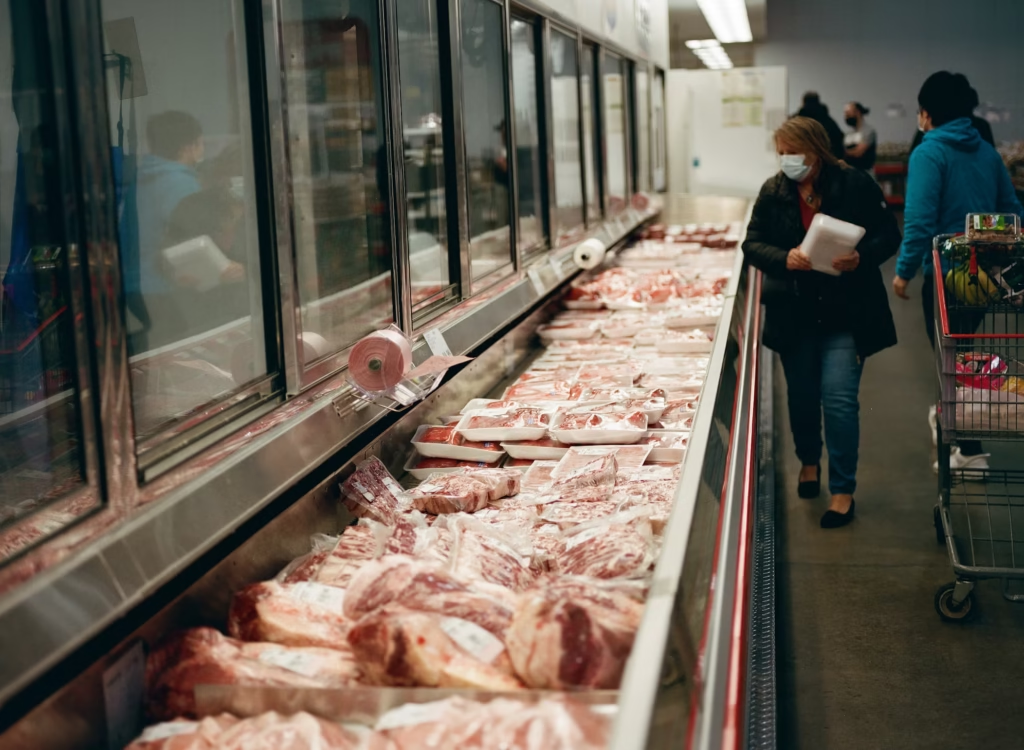In recent and unfortunate bird flu news, We have reports of two fatal H5N1 cases in children. The first, a three year old girl in Mexico. The second, a two year old child in India. The latter case also invites questions about the safety of the food chain as more H5N1 infected poultry meat is found in commercial products.
Mexico reports a fatal human H5N1 case in a three year old child
A few days ago, I posted an article about Mexico’s first human H5N1 infection (See Mexico Reports First Human H5N1 Case). This case was in a three year old girl, hospitalized in serious condition.
On April 8, the Mexican Health Ministry reported that the girl unfortunately died of H5N1. According to the new press release, she died at 1:35 a.m. from “respiratory complications resulting from the infection.”

Whether this means that the case progressed to ARDS remains unclear, but such has happened in the severe H5N1 human cases.
It was only a few days before that this case was reported (April 5). At that time, the patient was hospitalized in a special tertiary care unit. On April 1, lab testing confirmed she was infected with H5N1. She was then treated with oseltamivir.
The fact that the patient received antiviral treatment in the hospital but still progressed to what sounds like respiratory failure may indicate that treatment was started too late. Oseltamivir is most effective when given as soo
The source of the child’s H5N1 infection in Mexico remains unknown
When the case was first reported, health authorities were working to determine the source of infection. Wild birds and local birds near the patient’s home were sampled. However, to date the origin of her infection remains unknown.
As previously discussed, the girl lived in a heavily agricultural region, but there has not been any reported H5N1 outbreaks in commercial poultry flocks in the country.
There are no reports of further transmission. According to the health ministry, 38 of the girl’s contacts have tested negative for the virus. No additional human cases to date.
India reports a fatal human H5N1 case in a two year old child
In the first few days of April, we saw news reports that a child in India had died from H5N1. On April 2, CIDRAP posted a news update reporting that the child was a two year old girl residing in India’s Andhra Pradesh state.
The child died on March 15. She was hospitalized undergoing treatment at the time of her death.
According to the Times of India, the girl was first treated at a local hospital. She was then transferred to AIIMS after her condition worsened. By March 4, the girl had a fever, breathing difficulties, and diarrhea.
None of the girl’s family members tested positive for the virus. There were no reported poultry outbreaks in the surrounding area.
However, the family said she had eaten raw chicken before she fell ill. In fact, the family said that occasionally the girl ate small pieces of raw chicken.
I don’t think anyone needs reminding that eating raw chicken meat is a terrible idea. Apart from the various bacterial diseases this can cause, we also must worry about bird flu.

This is not new, as we have seen many recent examples of cats dying from H5N1 infection after consuming raw chicken meat. In December 2024, a recall was issued for raw turkey meat products after several cats died of H5N1 after eating the contaminated meat. We have also seen cats contract the virus and die from drinking raw milk. The tragic loss of a pet should not be understated. As a cat owner myself I understand, and I personally would never feed my cats raw food.
But an even bigger question is how did H5N1 positive poultry get into the food chain? Countries around the world practice culling when they detect H5N1 in flocks. In the case from India, the agricultural authorities reported no known H5N1 infected flocks in the area.
So where did the virus that killed this child come from? I have seen nothing to suggest this was from backyard poultry. If it was chicken meat purchased commercially, how did meat positive for bird flu find its way onto store shelves? We’ve seen an increasing number of stances where H5N1 positive raw meat (or milk) intended for human consumption contains the virus. That’s concerning.
Has H5N1 increased the risk to the food chain?
The fact is, H5N1 cannot be permitted to enter the food chain. The risks are already too high with it being in dairy cattle in the U.S. and wild birds globally. And yet, we’ve already seen product recalls of contaminated raw milk and contaminated raw chicken meat, the latter of which was meant for cats. But the problem looms larger: infected poultry was not culled but instead went to slaughter and the meat sold commercially.
In my very first post, I talked about the risk of contaminated meat hitting the store shelves after the incident in Poland. (See H5N1 contaminated meat caused the deaths of 30 Polish cats from bird flu). There, during the summer of 2023, at least 30 domestic cats died of H5N1. Notably, all the viruses isolated from the cats carried a rare set of mutations. The same mutations were found in a sample of H5N1 positive frozen chicken meat from one of the cat owners.
The implication was that the cats died after eating contaminated poultry meat. Indeed, a subsequent study found that the cats were likely infected through “poultry meat contaminated with the virus, that had accidentally entered the cats’ food chain.” But it wasn’t just the animal food chain, it was also the human food chain. The chicken submitted during the investigation was from one cat owner’s refrigerator. Further, the meat had been “purchased fresh for human consumption.”
That was quite alarming, and it remains so today. I was reminded of this after reading about the child in India who died after eating raw chicken. Like in Poland, the raw chicken meat was being prepared for human consumption.
The meat we eat is not supposed to contain bird flu. I find it incredibly concerning that people are purchasing meat that turns out to be positive for H5N1. So the question is, how is H5N1 contaminated poultry meat entering the food supply?
It also invites questions as to how the poultry industries around the world ensure that H5N1 does not enter the supply chain. Clearly there are gaps here.

The implications of H5N1 on human health going forward
We saw in Poland, and now in India, that H5N1 positive poultry meat made its way into the commercial sphere. That means the poultry were infected before they were sent to slaughter, which indicates an undiscovered or unreported H5N1 outbreak at the source. Or perhaps the poultry was infected during transport, or the raw meat contaminated with H5N1 after slaughter. Any of these are possible, but under any scenario there are problems with quality control. Such measures are meant to keep the public safe by preventing bird flu from entering the food supply.
People can protect themselves from not eating raw meat. Indeed, the Indian health authorities cautioned the public against eating raw meat or undercooked poultry in the wake of this case.
People should also avoid feeding their pets raw meat. Public health authorities have scaled up this warning as more cats die of H5N1 after eating raw poultry meat. At this time there has been no evidence of cats transmitting the virus to their owners, but we don’t want to see our pets die from bird flu.
Two two fatal H5N1 cases in children are tragic. Prayers for families of the child from Mexico and the child from India. I hope more answers are forthcoming for both cases.
We don’t even know how the girl in Mexico contracted the virus. Knowing the exposure route may shed light on why the case was so severe. Nor do we know the genetic sequencing for either case, which would help narrow down where the viruses came from. As to the India case, knowing where the virus fits in the H5N1 family tree could also help determine how H5N1 entered the food chain.
Until next time.
For more bird flu updates and research study analysis, be sure to read my other articles and follow me on social media.
Leave a comment below and join the discussion, and always feel free to reach out to me!



Pingback: WHO Update on fatal H5N1 case in Mexico - Bird Flu Studies